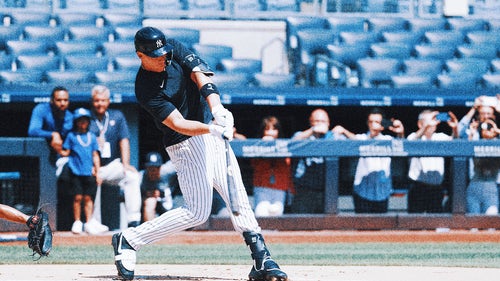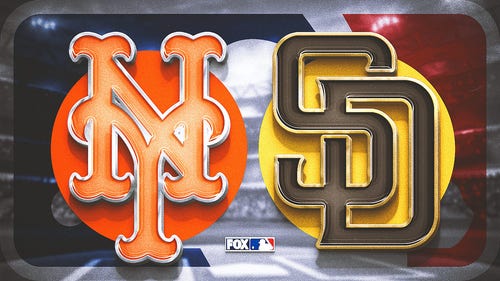For a moment, I want you to pretend that Shohei Ohtani doesn’t pitch and never did.
I know that’s a huge part of his schtick as the greatest baseball player we’ve ever seen, but for the next few minutes just forget about it. Poof it out of your memory, zap it from your brain. As far as you know, Ohtani is nothing more than a phenomenal batsman on the Angels who, for some reason, only DH’s.
Still with me?
Because Ohtani the hitter, without any of his magnificent ball-throwing gobbledygook, is in the midst of a historic offensive season. His 36 big flies are tops in the majors (Matt Olson is the only other hitter with at least 30), his 60 walks are tied for the American League lead and his 1.072 OPS is far and away the best in the world.
But let’s talk about his seven triples.
Triples?
Yes. You see, amidst all the deadline trade chatter and two-way wizardry, Anaheim’s franchise superstar is chasing a unique flavor of history. The 2023 season is nearly two-thirds done and Ohtani leads the league in both home runs and triples. Only two players, Willie Mays in 1955 and Jim Rice in 1978, have ever accomplished such a feat. Ohtani, who fell two homers shy of pulling it off in 2021, is well on his way this year to becoming the third.
Triples and home runs are technically just one base apart, but they might as well be a world away. Traditionally, three-baggers have been for the little guys, the fleet-of-foot slap artists and high-effort hardos who survive on the fringes by hunting down extra bases like Mantracker. Home runs on the other hand are for big boys with big swings, muscled-up strongmen with forearms of granite.
Generally, both require (1) making some contact and (2) hitting the baseball hard, but home runs are about elevation, lift, launch angle and strength, while triples are about finding gaps, foot speed, instinct, outfielders biffing it and sheer desire.
Ohtani has that last bit down.
For him, a laser pulled down the right field line is an opportunity for three bases. For many other home run collectors, it’s an opportunity for a leisurely jog into second base. Watch him burst out of the batter’s box and you can see the #want in his eyes. And he needs that instinct now more than ever because, for whatever reason, Ohtani’s sprint speed numbers are down this season, a full foot per second slower than where he was two years ago. He’s still in the 63rd percentile league wide — a freakish number for somebody with 36 taters — but Ohtani is certainly not a Carl Crawford, Kenny Lofton-type triples merchant.
Of Ohtani’s seven three-baggers this year, just two were laced into the right field corner, as guaranteed as a triple can be given the raw distance from that great beyond to third base. Three others were gappers to right center that Ohtani legged into a triple. One was an opposite field rocket that rolled to the wall in Coors. And only one, Ohtani’s first three-bagger of the season, could be described as an unforgivable outfield whoopsie-daisy.
It’s worth mentioning how stadium dimension and park factors play into this discussion. Besides Coors Field in Colorado, triple-friendly ballparks tend to be dinger-stingy, and vice versa. Makes sense, right? Big outfields in places like Detroit, San Francisco and Kansas City are more conducive to extra bases, but that room for shenanigans also means the walls are simply further from home. Homer-happy short porches like Yankee Stadium, Citizens Bank Park and Great American Ball Park in Cincinnati are the opposite.
Ohtani’s home park in Anaheim is conveniently one of only two MLB stadiums this year (Wrigley is the other) with above-average park factors for both homers and triples.
Another factor in Ohtani’s favor is his all-fields approach. Defenses tend to play Ohtani straight-up in the outfield, with a slight shade toward the opposite field. That creates a bit more room and time for him to gallop toward third whenever he rips one into the gap or down the line.
But there’s no one-sized-explanation-fits-all here. Shockingly, Shohei Ohtani is very good at a lot of different baseball skills. That versatility allows him to rack up statistics in a lot of categories that don’t traditionally overlap (I TOLD YOU TO FORGET ABOUT THE PITCHING STUFF). So, even when it comes to a stat like triples that is disproportionately dependent on outfield defense and positioning, Ohtani still finds himself in a league of his own.
Jake Mintz, the louder half of @CespedesBBQ is a baseball writer for FOX Sports. He played college baseball, poorly at first, then very well, very briefly. Jake lives in New York City where he coaches Little League and rides his bike, sometimes at the same time. Follow him on Twitter at @Jake_Mintz.
MLB trending

Get more from Major League Baseball Follow your favorites to get information about games, news and more







